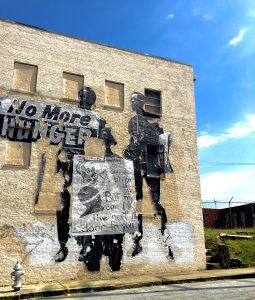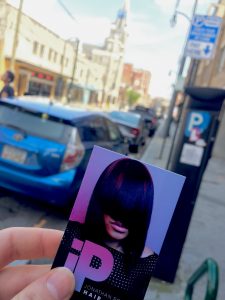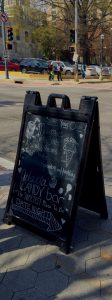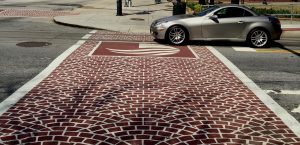
Civil right’s activism in the production of art.
What is art? Can it reflect the gentrification of the Auburn Avenue community?
The first question, what is art?, is a never ending question, one that will likely not be answered today. I, however, utilize multiple interpretations of art to illustrate that yes, art can reflect the gentrification of a community.
Evident in the first image, art is utilized as a means to further social justice, to advocate for equality. Art is utilized as a means to an end in the sense in that it has a purpose. This ideal, however, transformed as we journeyed down Auburn Avenue. Art began to take on various roles.

Art reflecting an historical image of the community
As we passed under the bridge, street art, social activism art, transformed into a contracted mural of the historical community. It is well preserved unlike the ones of the community in the less gentrified area. It also portrays an escape from the daily life, which can suggest that they surroundings are of a lesser beauty.

HERO Mural
As we continued, the prospect of contracted murals became a prominent trend. Initially, we found a small mural titled “HERO” and as we progressed we discovered the large contracted,

A Contracted HERO Mural of John Lewis
preserved “HERO” mural of John Lewis, a mural that remains as an attraction to the society. This can be taken as an indicator of gentrification, the notion of investing money into street art to attract visitors, tourists, etc.

Art as Hair
Then we witnessed the transformation of art into retail, into hair, into beauty, which is likely the result of gentrification. With each step, more shops appeared, each with its own creative flair. One man of a salon proceeded to hand out cards to everyone indicating the striving force to be successful, to invest money into this community, which is a common feature of gentrification.

Chalk Art?
Art transformed from social activism, to historical monuments, to hair, to shops, and now to chalk and roads. The well recognized sign of gentrification, a chalk board, became a prominent sign on our stroll. I interpret it as a means to illustrate their business as unique with ever changing qualities. Such businesses are prominent in gentrified areas.

Roads can no longer be pavement; they must be art!
Furthermore, the need for artistic, pleasing roads is a clear indicator in the greater need for pleasing scenery. Each indicating the unique qualities of a particular community, which again is an attribute of gentrification.
Hence, art transformed as the community undertook attributes of gentrification.